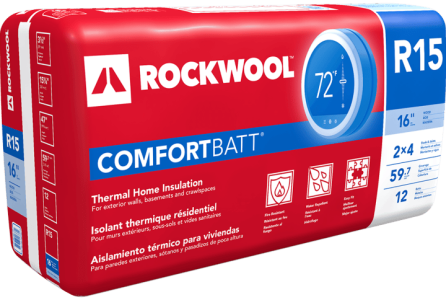Vented Attic
Stabilize temperatures
As heat normally rises, uninsulated attics are prime places where heat can escape from a building — and cold air can also easily enter. Installing insulation on the attic floor, between and above attic joists, can help to keep temperatures at a stable level throughout the year.
Benefits
-

Resists heat transfer, increasing energy efficiency -

Noncombustible products can slow the spread of fire -

Moisture resistant – does not promote growth of mildew or mold -

Ease of cutting and fit around obstructions
Application
Attic Floor
Attic floor insulation is a simple and effective way to increase the energy efficiency of a home by reducing heat movement through the attic, lowering the costs that come from heating and cooling interior spaces.
Insulation can be installed in the attic floor between floor rafters and above rafters to increase the total thermal performance. Attic spaces are often one of the most insulated areas of a home.
Featured Product
FAQ
How long does attic insulation last?
ROCKWOOL insulation is designed to last the entire life span of a building. Stone wool material does not cause any loft-related problems, such as rot or mold.
What is the thermal requirement for attic insulation?
The legal requirements vary per country and the performance level is influenced by the total construction.
Is batt insulation better than blown?
Batt insulation and blown insulation suit different building needs. Batt insulation can be more suitable when there is space to lay out the insulation. Blown insulation can be helpful for coverage in hard-to-reach attic spaces.
Contact a Sales Rep
Product knowledge & expert advice awaits
A ROCKWOOL representative will offer professional guidance on products and applications, tailored to your needs and budget.
Join the R‑Class
High-performance building starts now
The ROCKWOOL R‑Class Builder Program is 100% free. If you’re looking to level up to high-performance builds while building community, sign up today.

